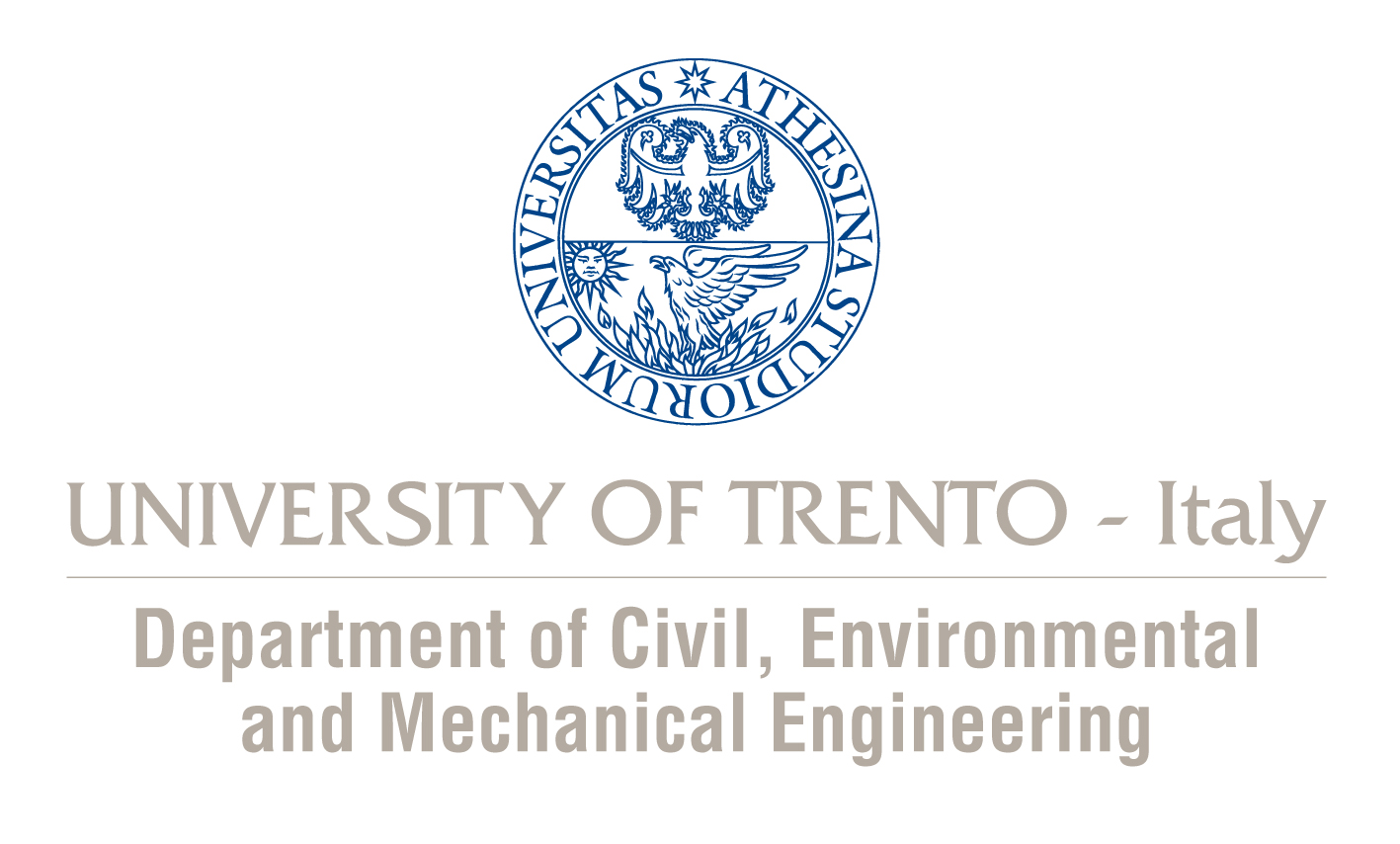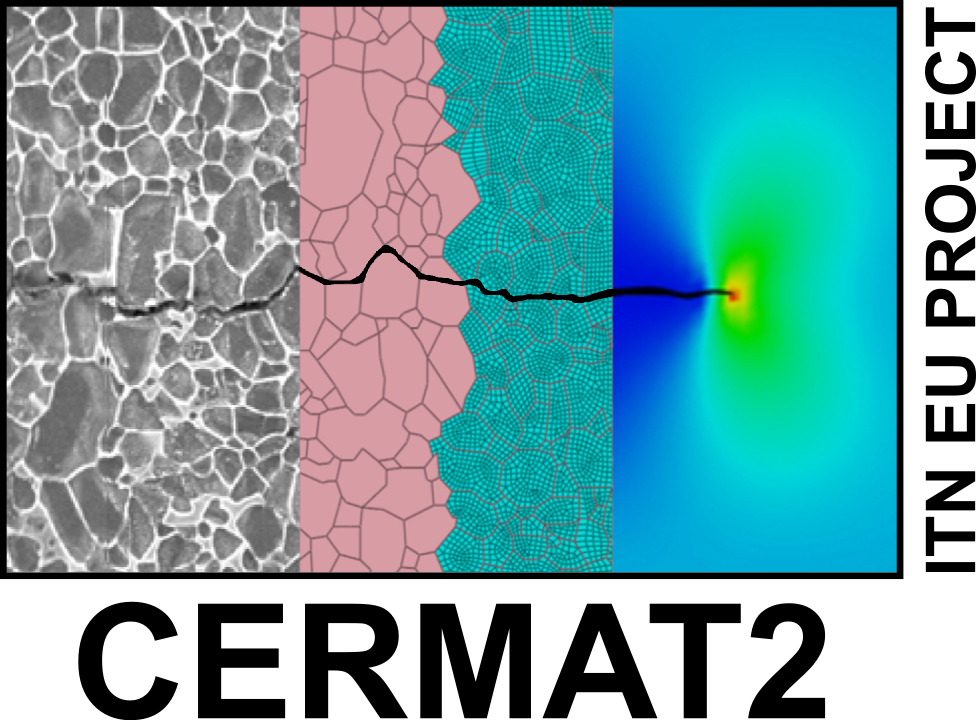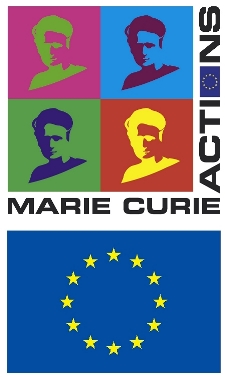CERMAT2 Summer School 2016, August 29 - September 2, 2016, Trento
--
 |
TC5 "Inverse analysis in material characterization" (20hrs) The course provides a synergic combination of experimental techniques with numerical simulations and mathematical programming to build a practical procedure based on inverse analysis that should be used for the assessment of unknown material parameters. The training is oriented to the numerical implementation, and participants will gain practical knowledge in coupling numerical simulations done by commercial codes with optimization routines written by them to have a fully automated procedure for the assessment of material parameters.
Venue
The CERMAT2 Summer School 2016 will take place at the Department of Civil, Environmental and Mechanical Engineering of the University of Trento (via Mesiano, 77). The Department is located on a beautiful hill, 10 minutes far from Trento city center by taking bus N.5 at the train station.How to reach us
Registration Form
You are not required to pay application or tuition fees. Registrations to the event are open until we reach a limited number of participants. Please send this registration form duly filled in together with your CV to Miss. Irena Jatro (irena.jatro@unitn.it)Download the Registration Form
Timetable
Here is the timetable fo the courseDownload the timetable
Programme
TC5 - Inverse analysis in material characterization vibration modes (20hrs)(Dr. Vladimir Buljak)
To solve a direct problem means to find analytical or numerical solution for ordinary or partial differential equations that are describing given problem. By having a minimum set of information about the problem, referred to as the condition of uniqueness, one can use powerful tools available nowadays to find a solution for a problem at hand. Inverse problems are defined as those in which some of these data are missing and they should be identified from the known solution of connected direct problem. Sub-group of inverse problems represents parameter identification problems, which are the main focus of this course. The course provides a synergic combination of experimental techniques with numerical simulations and mathematical programming to build a practical procedure based on inverse analysis that should be used for the assessment of unknown material parameters. In the main focus are parameter characterization problems in structural mechanics, although most of the material is applicable with marginal modifications also to other engineering fields. Studied inverse procedures are centered on minimization of discrepancy function which quantifies the difference between experimentally measured quantities and their computed counterpart. Clearly, such minimization is performed by iterative numerical optimization algorithms in the absence of analytical description of the objective functions. Therefore, important part of the course represents presentation of numerical optimization techniques. Theoretical lectures of the course are giving main concepts of selected, most popular, optimization algorithms that are discussed up to the details of their successful implementation. Detailed theoretical background on optimization theory is omitted in the course, but potentially interested students can be guided through available literature on particular topics. The concept of inverse analysis is presented and typical types of ill-posedness are covered with appropriate measures for their overcoming. Sensitivity analysis are discussed first in a traditional manner, namely the numerical calculations of first derivatives with respect to sought parameters. Such investigation represents an important first step in designing of inverse analysis procedure, which is also used to optimize the selected experiment and accompanying measurable quantities. Further on, the propagation of measurements uncertainty is evaluated again through sensitivity analysis by simulating different levels and types of measuring noise. Material parameter calibration based on inverse analysis makes recourse to repetitive test simulations. In the presence of large nonlinearities, such simulations can be time consuming, penalizing to a certain extend the applicability of the whole procedure. A remedy to this inconvenience can be achieved by employing a reduced basis model for the acceleration of direct simulations. To this purpose within the course methods based on Proper Orthogonal Decomposition (POD) and Radial Basis Functions (RBF) will be presented. Within a structural context discussed in the course, simulations of the experiments are done by finite element modeling (FEM), traditionally by commercial software. The training is oriented to the numerical implementation, and participants will gain practical knowledge in coupling numerical simulations done by commercial codes with optimization routines written by them to have a fully automated procedure for material calibration.
Learning outcomes
After fulfilling this course participants will be able to: -Understand various techniques and iterative algorithms used in the theory of numerical optimization. -Write codes in MATLAB aimed to numerically solve the optimization problems by using first order optimization algorithms. -Write codes for interfacing MATLAB with ABAQUS (commercial FEM software) required for automatic modification of input files necessary for FEM analysis. -Generate fully working inverse analysis procedures by writing all necessary codes and putting them together in order to solve problems of material parameter identification. -Design reduced basis models based on POD-RBF for the acceleration of non-linear simulations of structural problems.
Prerequisite
Background knowledge of FEM simulations by commercial codes, and basic familiarity with programming techniques preferably in MATLAB is required.
Literature
- "Inverse analyses with model reduction: Proper Orthogonal Decomposition in Structural Mechanics". Springer Verlag, 2012. Vladimir Buljak
- "Numerical Optimization". Springer Verlag, 2000. Jorge Nocedal and Stephen Wright.
- "Inverse problem theory and methods for model parameter estimation". SIAM, Society for Industrial and Applied Mathematics. A Tarantola
- "Inverse Problems in the Mechanics of Materials: an Introduction". CRC Press, Boca Raton, 1994. Bui H. D.
- "Teoria della predizione e del filtraggio". Pitagora editrice Bologna, 2011. Segio Bittanti
- Introduction to inverse problems
- Different types of inverse problems. Setting up an inverse operator
- Parameter identification problems through inverse analysis
- Sensitivity analysis. Different types of ill-posedness. Optimization of experimental setup.
- Numerical optimization algorithms for deterministic inverse problems. Least squares problems
- Gradient based methods. Line search methods.
- Family of Trust Region methods.
- Strongly non-convex objective functions. Minimization through soft computing techniques.
- Setting an automatic procedure for parameter characterization centered on minimization of the objective function.
- Practical MATLAB implementation of selected optimization algorithms.
- Interfacing ABAQUS with MATLAB for fully automatic inverse analysis procedures.
- Inverse analysis in structural mechanics: practical exercises of material parameter assessments through inverse analysis: different case studies.
- Assessment of different types of measuring errors: a deterministic approach.
- Introduction to stochastic inverse analysis: Monte Carlo methods.
- Kalman filets for stochastic inverse analysis.
- Modern trends in inverse analysis: reduced basis models and neural networks.
- Proper Orthogonal Decomposition and Radial Basis function interpolation for fast simulation of non-linear systems.
- Uniform space filling techniques. Latin hypercube. Dynamic interaction node method.
- POD - RBF method for real time simulations within inverse analysis.
Course Material
TC5_Presentation_IA.pdfTeacher Profile

|
Dr. Vladimir Buljak. Dr. Vladimir Buljak was awarded his PhD title in 2011 at the Politecnico di Milano. Since April 2011, he has been working as Assistant Professor at the Faculty of Mechanical Engineering, University of Belgrade. |
Photos
Contacts
Irena JatroDipartimento di Ingegneria Civile, Ambientale e Meccanica
Università di Trento, via Mesiano, 77 I-38123 Trento (Italia)
E-mail: irena.jatro@unitn.it


